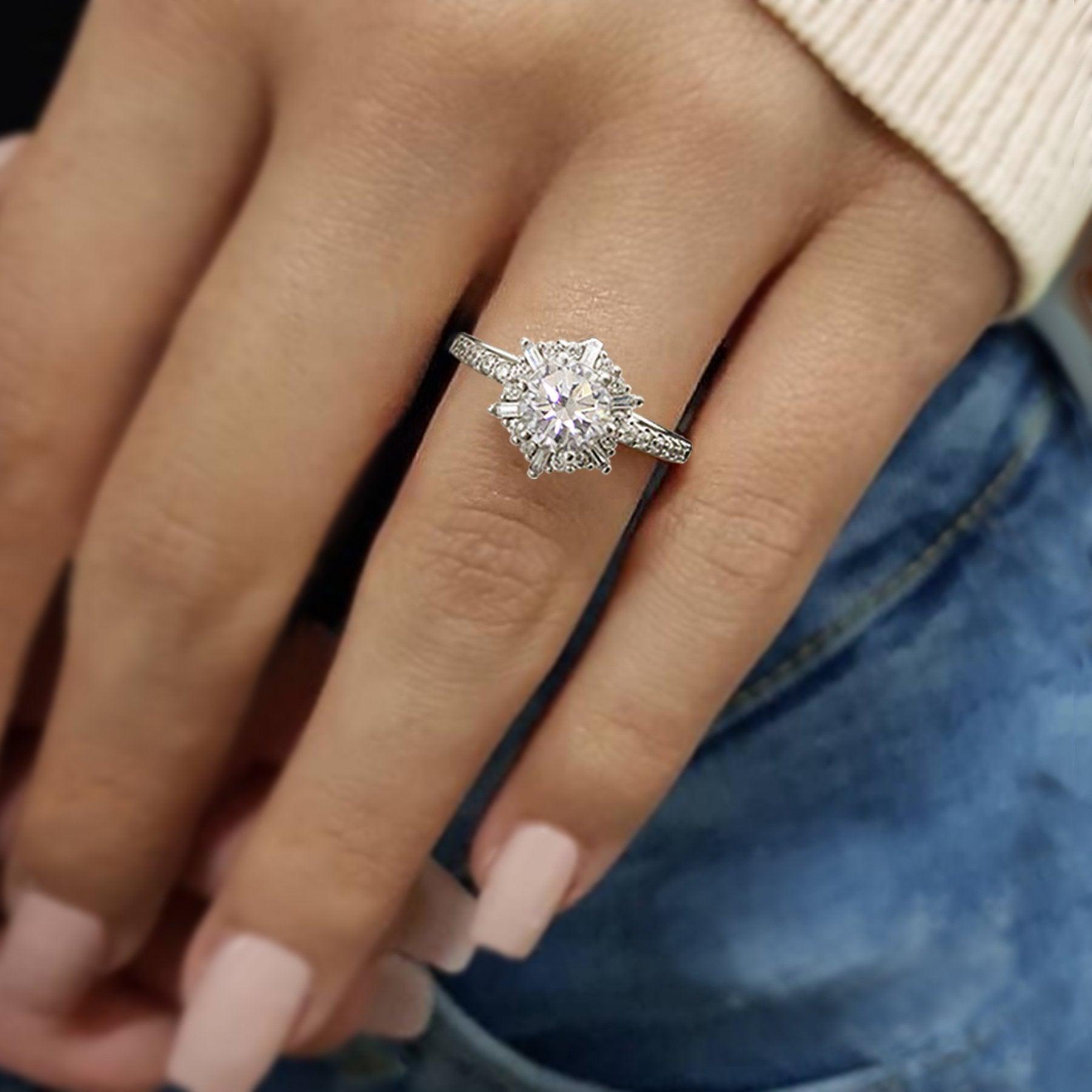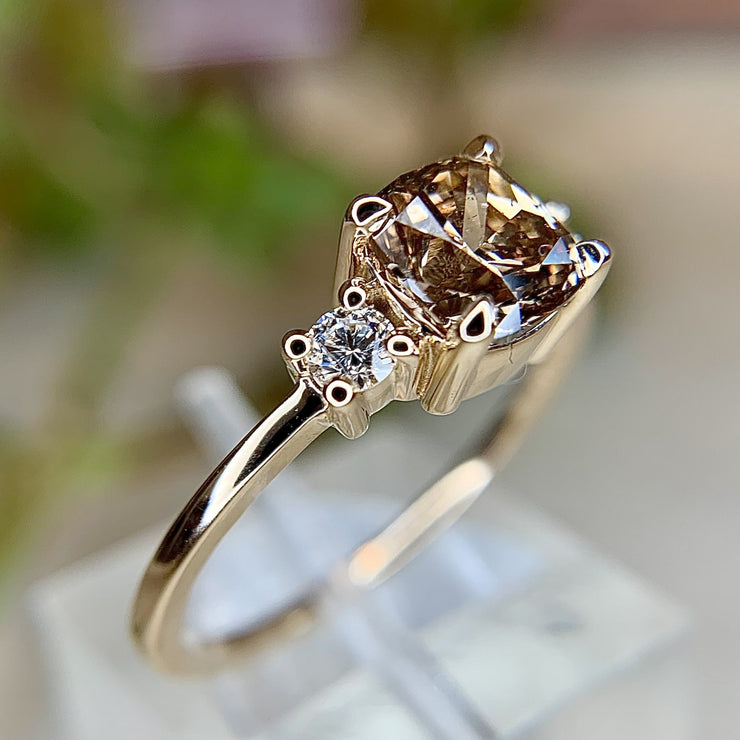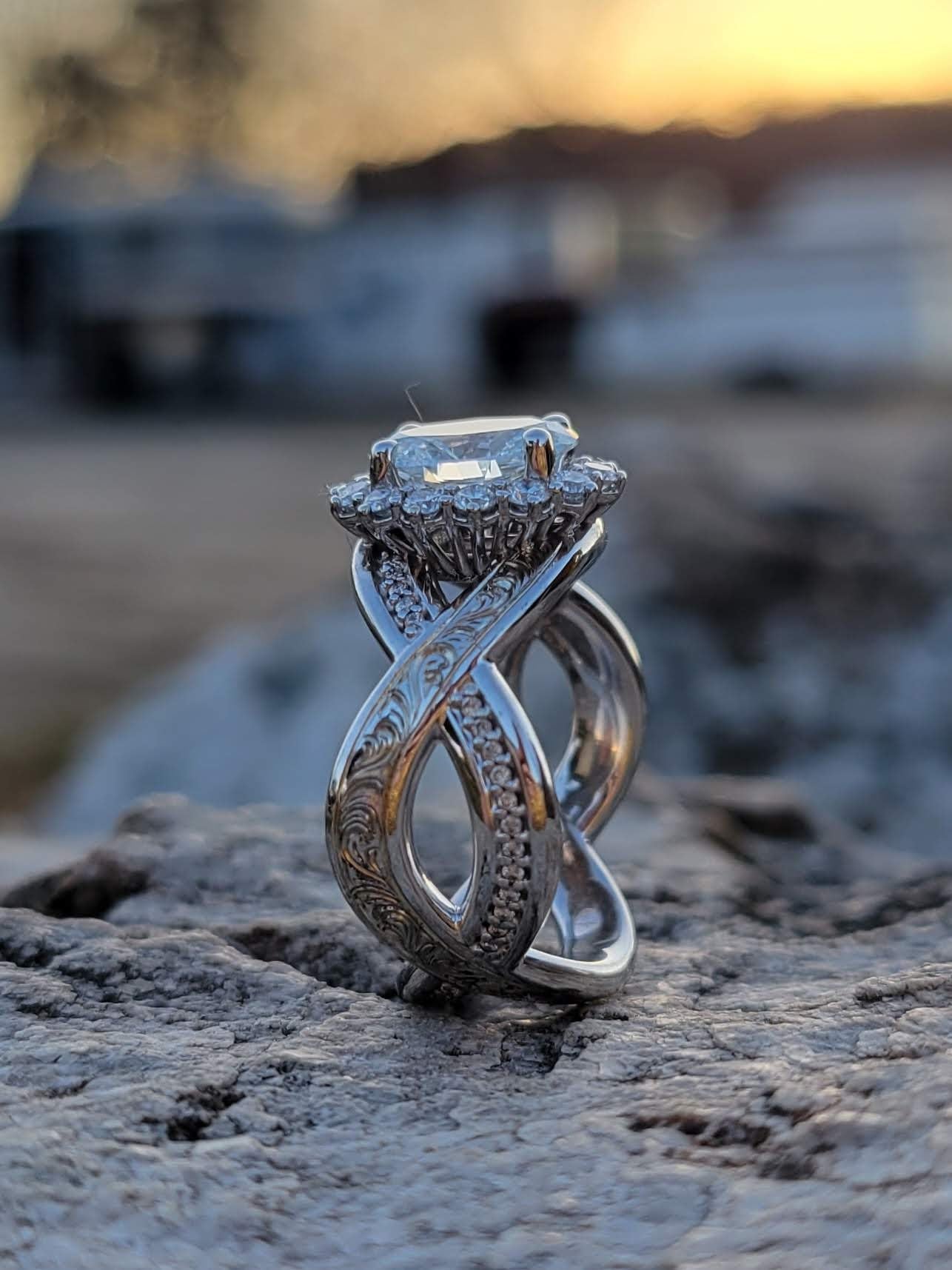lab grown diamond engagement rings: The Smart, Stylish, and Sustainable Option
Wiki Article
Why Laboratory Grown Diamond Involvement Rings Are the Perfect Selection for Eco-Conscious Couples
Lab-grown Diamond interaction rings offer a compelling alternative for pairs who focus on sustainability. These diamonds use a striking option to traditional extracted stones, substantially decreasing environmental damage. They are created using advanced techniques that guarantee both top quality and luster. As understanding of moral sourcing expands, lots of couples are reassessing their options. What implications does this shift have for the future of the Diamond market?

The Environmental Effect of Conventional Diamond Mining
Although Diamond mining has long been celebrated for its allure and stature, the ecological consequences of conventional mining techniques are progressively worrying. The extraction of diamonds frequently includes considerable land disruption, causing deforestation and habitat loss for many species. Additionally, the process consumes huge quantities of water, which can diminish local sources and negatively impact bordering neighborhoods. Toxic chemicals made use of in mining procedures can infect nearby water sources, additionally jeopardizing both human populaces and wild animals.In addition, the carbon footprint connected with carrying mined diamonds includes in the total environmental toll. The heavy equipment and equipment required for mining operations add greatly to greenhouse gas emissions. As awareness of these issues expands, many customers are beginning to wonder about the sustainability of standard Diamond sourcing. This shift in point of view highlights the urgent need for more eco-friendly options, such as lab-grown rubies, which assure to minimize the eco-friendly influence while preserving the beauty and worth of Diamond precious jewelry.
The Process of Developing Lab-Grown Diamonds
Lab-grown diamonds are created with two primary methods: High Stress High Temperature (HPHT) and Chemical Vapor Deposition (CVD) The HPHT procedure resembles the natural conditions under which rubies develop in the Earth's mantle. It entails subjecting carbon to extreme stress and temperature, leading to the formation of carbon atoms right into Diamond frameworks. In contrast, the CVD approach permits for the growth of rubies in a regulated setting. This technique uses a gas combination consisting of carbon, which is stimulated to form plasma, making it possible for carbon atoms to down payment onto a substrate and expand layer by layer right into Diamond crystals.Both techniques create diamonds that are chemically and physically similar to all-natural diamonds - lab grown diamond engagement rings. The selection of approach usually depends upon the wanted features and dimension of the final gem. This ingenious approach to Diamond development not just supplies a lasting choice however also enables for better transparency in the sourcing of materials
Quality and Brilliance of Lab-Grown Diamonds
While several may presume that lab-grown diamonds vary in quality from their natural counterparts, they really display comparable sparkle and aesthetic charm. Lab-grown diamonds are created making use of advanced technology that duplicates the natural conditions under which rubies develop, leading to rocks that have similar physical and chemical homes. These diamonds accomplish the very same extraordinary clearness and shade grading as mined diamonds, making them indistinguishable to the naked eye.In regards to radiance, lab-grown diamonds commonly display remarkable light performance as a result of their precision-cut elements. The extensive top quality control throughout manufacturing assurances that these diamonds satisfy high requirements, boosting their aesthetic appeal. Furthermore, they are offered in a selection of forms and sizes, permitting pairs to locate the ideal ring to match their individual style. Ultimately, lab-grown diamonds supply an exquisite combination of charm and high quality, making them an attractive selection for interaction rings.
Moral Considerations in the Diamond Sector
As consumers come to be significantly familiar with the ethical ramifications bordering Diamond sourcing, the discussion around the Diamond industry has actually moved noticeably. Worries regarding dispute rubies, commonly described as "blood rubies," have prompted ask for greater transparency and liability in mining methods. These rubies are mined in battle zone and marketed to fund armed dispute, raising severe ethical concerns for consumers. Additionally, the environmental impact of standard Diamond mining has actually come under scrutiny, with concerns such as habitat damage and water air pollution frequently highlighted.In action, many have actually turned to lab-grown rubies as an extra ethical alternative. These rocks are developed in controlled atmospheres, removing the risks connected with mining. Lab-grown diamonds appeal to consumers looking for to make accountable choices that align with their worths. The growing need for honest techniques remains to reshape the Diamond market, pushing for humane and lasting sourcing methods.
Cost-Effectiveness of Lab-Grown Diamonds
Lab-grown diamonds use a compelling choice for consumers looking for affordable engagement rings - lab grown diamond engagement rings. Priced considerably reduced than their all-natural equivalents, they provide outstanding worth for money without giving up quality or appearance. This cost makes lab-grown diamonds an eye-catching choice for budget-conscious pairsReduced Rate Point
Many pairs are discovering that going with lab-grown Diamond interaction rings can significantly reduce their total prices without compromising high quality or appeal. These rubies usually cost 30% to 50% much less than their extracted counterparts, making them an appealing option for budget-conscious customers. The price advantage arises from lower manufacturing prices and an extra effective supply chain, which eliminates the expenditures associated with mining. Because of this, pairs can buy bigger stones or more intricate settings, improving the overall aesthetic of their rings. This price not just enables a much more tailored option yet also aligns with the worths of eco-conscious Going Here pairs who prioritize sustainability while remaining financially visit the site smart. Lab-grown diamonds provide a perfect mix of elegance and economic climate.Value for Cash
The cost-effectiveness of lab-grown rubies expands beyond their initial rate, offering extraordinary value for cash. Unlike all-natural diamonds, lab-grown choices can be as much as 40% less pricey while preserving the exact same physical and chemical residential or commercial properties. This price permits couples to purchase larger or higher-quality stones without surpassing their budget plans. The resale value of lab-grown diamonds is progressively boosting, making them a more sensible option for future financial factors to consider. Additionally, lab-grown diamonds frequently come with reduced environmental and ethical costs, giving pairs with assurance. By selecting lab-grown diamonds, eco-conscious pairs not only conserve money however additionally add to lasting methods, boosting their total value proposal in the precious jewelry market.
Modification Options for Lab-Grown Involvement Rings
How can couples assure their interaction ring mirrors their distinct romance? Modification choices for lab-grown Diamond engagement rings give an optimal remedy. Pairs can pick from various Diamond forms, including round, princess, or oval, allowing them to select a style that resonates with their personal visual.In addition, they can go to website select the setting-- be it solitaire, halo, or vintage-inspired-- making sure the ring enhances the Diamond's sparkle. Steel choices, such as white gold, yellow gold, or climbed gold, even more enhance personalization, satisfying private tastes.
Furthermore, couples can include significant inscriptions, adding an emotional touch that symbolizes their bond. With these substantial modification choices, lab-grown Diamond engagement rings not only embody a pair's love but also mirror their worths, making them a perfect selection for eco-conscious collaborations. Inevitably, these rings come to be a true representation of their special journey with each other.
Frequently Asked Questions
Just How Do Lab-Grown Diamonds Contrast to Natural Diamonds in Value?
Lab-grown rubies generally set you back 20-40% much less than natural diamonds, supplying comparable high quality and appearance. Their lower rate point makes them an appealing choice, specifically for budget-conscious customers seeking sustainable and moral alternatives in jewelry.
Are Lab-Grown Diamonds Much More Long Lasting Than All-natural Diamonds?
Lab-grown diamonds possess the same physical and chemical homes as all-natural rubies, consisting of sturdiness. Both types rack up an ideal 10 on the Mohs range, ensuring that lab-grown diamonds are equally immune to damaging and damages.Can Lab-Grown Diamonds Be Resold Easily?
Lab-grown diamonds can be marketed, but their market need varies compared to all-natural rubies. While some purchasers value their ethical beginnings, others may favor natural alternatives, possibly impacting resale value and convenience of transaction.What Are the Treatment Instructions for Lab-Grown Diamonds?
Lab-grown rubies require routine care to keep their radiance. Cleaning up with mild soap and warm water, making use of a soft brush, and preventing severe chemicals will certainly aid preserve their sparkle and honesty for years ahead.Are There Any Type Of Qualifications for Lab-Grown Diamonds?
Lab-grown rubies can be accredited by credible companies such as the Gemological Institute of America (GIA) and the International Gemological Institute (IGI) These qualifications guarantee quality, authenticity, and adherence to market requirements for lab-created gemstones.Both approaches produce diamonds that are chemically and literally similar to natural rubies. Lab-grown rubies are produced using sophisticated innovation that replicates the all-natural conditions under which diamonds form, resulting in stones that have similar physical and chemical buildings. Lab-grown diamonds normally cost 20-40% much less than all-natural rubies, using comparable top quality and appearance. Lab-grown diamonds have the very same physical and chemical properties as all-natural diamonds, consisting of resilience. Lab-grown rubies can be re-selled, but their market need differs compared to all-natural rubies.
Report this wiki page